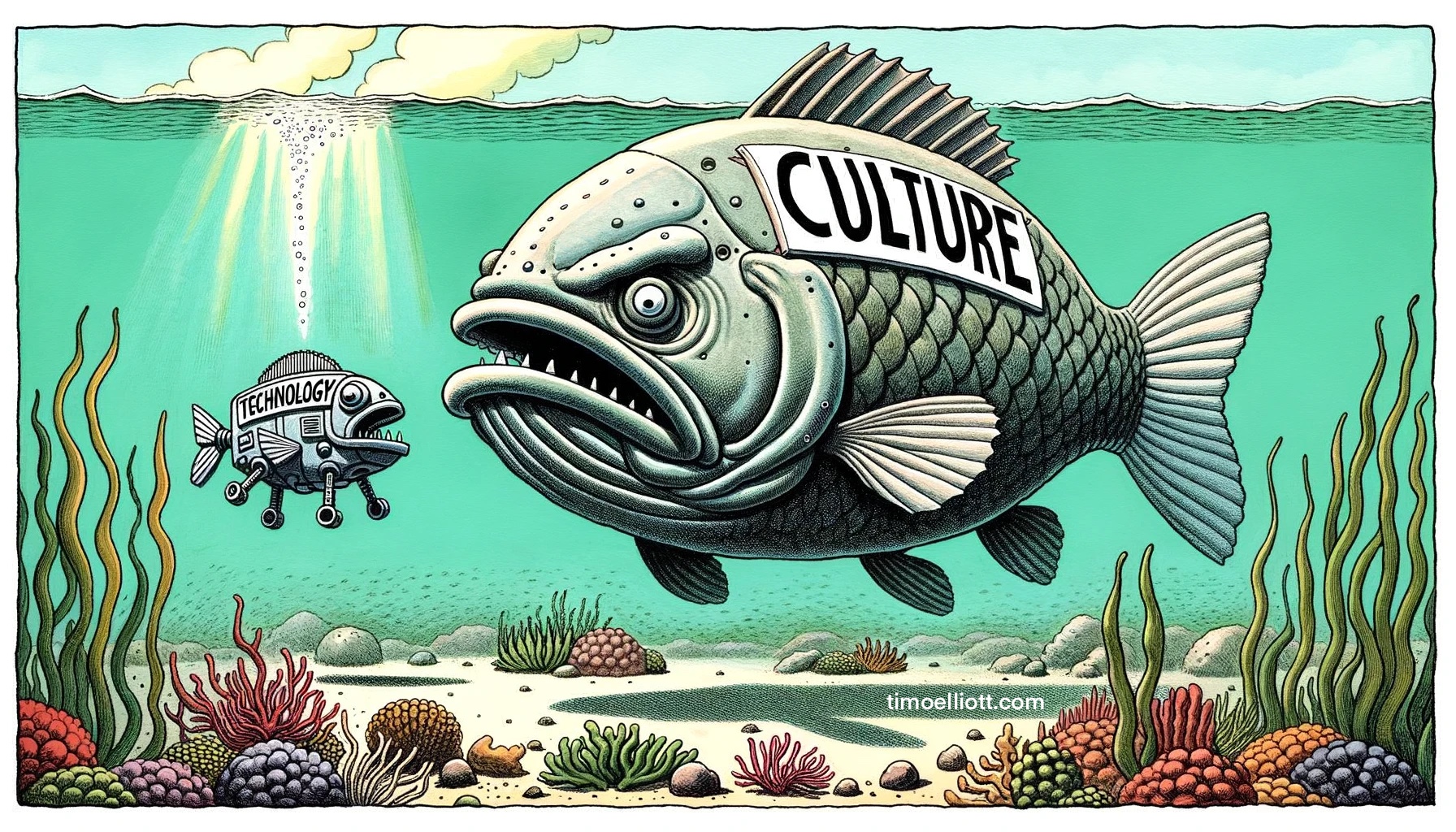Just a quick reminder that a hostile culture can kill any technology project — and often does!
Researchers say that AI projects tend to be “technosocial” — where technical aspects dominate the social side of work.
But investments in “sociotechnical” approaches (putting people first) can pay big dividends, because ultimately the biggest benefits of AI are in Augmented Intelligence, empowering people and teams to do more than they could in the past.
Taking care to structure the new ways of working after a technology implementation can save a world of hurt and frustration for everybody involved.

According to the academics, there is a list of things you need to think about when optimizing roles and teams for new technologies like AI:
Joint optimization: People should be viewed as complementary to the machines rather than as an extension of them.
Adaptability/agility: The design of work should aim at increasing variety rather than decreasing it, and groups should have responsibility for solving local problems. Individual and organizational learning is essential to allow organizational adaptation to change.
Responsible autonomy: Work should be given to teams or groups, internally supervised, thereby avoiding “silo thinking” by engaging the entire system.
Wholeness: the objective to be completed should be specified, with a minimum of regulation about how it is to be done. The system should be conceived as a set of activities making up a functioning whole, rather than a collection of individual tasks.
Meaning: Each individual should experience an optimal level of variety, have learning opportunities, a scope for setting decisions that affect the outcomes of work, organizational support, a job worthy of societal recognition, and the potential for a desirable future.
Have you seen people discuss these aspects of work in the projects you’ve been involved with?
For more details, read the full paper on Artificial Intelligence and Digital Work: The Sociotechnical Reversal
